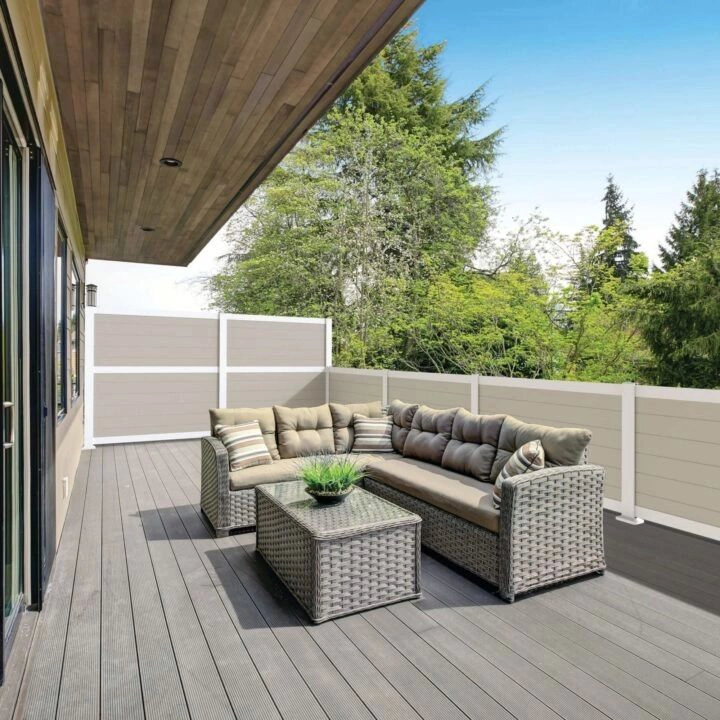
A deck is a great place to relax and entertain, but without the right privacy measures, it can feel exposed. Whether you want to block the view from nosy neighbors or create a cozy retreat, installing a deck privacy screen is an excellent solution. However, before moving forward with this project, there are several key factors to consider to ensure that you choose the right option for your space.
Local Regulations and HOA Rules
Before installing, check your local building codes and homeowners’ association (HOA) rules. Some areas have restrictions on the height, materials, and placement of privacy screens. Failing to comply with these regulations could result in fines or the need to remove the structure. To avoid these issues:
- Research city zoning laws regarding deck modifications.
- Review HOA guidelines for any specific requirements.
- Obtain necessary permits before installation.
Material Options and Durability
Deck privacy screens come in a variety of materials, each offering different levels of durability, maintenance, and aesthetic appeal. Some popular choices include:
- Wood: A classic option that provides a natural look but requires regular maintenance, such as staining or sealing.
- Vinyl: Low-maintenance and resistant to weathering, but may have limited design options.
- Metal: Powder-coated aluminum or steel provides a modern, durable solution with minimal upkeep.
- Fabric or Bamboo: Ideal for temporary or seasonal use, offering flexibility and easy installation.
When selecting a material, consider factors such as climate, longevity, and the overall design of your deck screen.
Style and Design Considerations
Your deck should complement the existing aesthetic of your outdoor space while serving its functional purpose. Think about:
- Height and Coverage: Do you need full coverage or just partial privacy?
- Color and Finish: Should it match your deck or create a contrasting accent?
- Decorative Elements: Lattice patterns, slats, or even greenery can add an extra design touch.
If you want to create a more open feel while still maintaining privacy, consider incorporating planters with tall shrubs or climbing vines for a natural deck privacy screen barrier. This approach blends functionality with aesthetics, enhancing your outdoor area while keeping it private.
Installation Process and Costs
The complexity of installation can vary depending on the materials and design chosen. Before committing, evaluate:
- DIY vs. Professional Installation: Some screens are simple to install yourself, while others may require professional assistance.
- Budget: Costs will depend on material choice, labor, and additional features such as lighting or built-in seating.
- Timeframe: How long will the project take? Some installations may require permits and inspections, which can extend the timeline.
Understanding these aspects beforehand will help you set realistic expectations and avoid unexpected expenses.
Maintenance and Longevity
To ensure that your deck remains in good condition, consider the maintenance requirements of your chosen material:
- Wood: Needs periodic staining or painting to prevent rot and insect damage.
- Vinyl: Requires occasional cleaning with soap and water.
- Metal: Powder coating helps prevent rust, but regular checks for wear and tear are necessary.
- Fabric/Bamboo: May need seasonal replacement, especially in harsh weather conditions.
Selecting a material that aligns with your maintenance preferences will save time and effort in the long run.
Common Mistakes & Myths
Many homeowners believe that any deck will work for their deck, but choosing the wrong one can lead to regrets. Some common mistakes include:
- Ignoring Local Codes: Installing a screen without checking regulations can result in costly fines.
- Choosing the Wrong Material: Opting for a high-maintenance material without considering upkeep requirements.
- Poor Placement: Positioning the screen in a way that blocks airflow or sunlight can make your deck feel cramped.
Avoiding these pitfalls will ensure it is both functional and aesthetically pleasing. By taking the time to research and plan, you can maximize the benefits of your investment.
FAQs
Can I install a deck privacy screen on a rental property?
It depends on your lease agreement. Some landlords may allow temporary solutions like fabric screens or potted plants, while permanent structures may require approval.
How high should my deck be?
Most privacy screens range from 4 to 8 feet in height. Be sure to check local regulations to determine the maximum allowable height in your area.
What is the best material for a low-maintenance?
Vinyl and powder-coated metal are excellent low-maintenance options that require minimal upkeep and are resistant to weathering. These materials will help ensure that your deck remains in top condition with little effort.
A well-planned deck can transform your outdoor space into a private oasis while enhancing the overall aesthetic of your home. By considering factors like local regulations, materials, design, installation, and maintenance, you can ensure that your investment adds both functionality and beauty to your deck.
If you’re ready to enhance your outdoor space with a high-quality deck privacy screen, contact Clean Cut Deck Builders at (215) 913-3829 today! Our team of experts can help you choose the perfect solution for your home.


